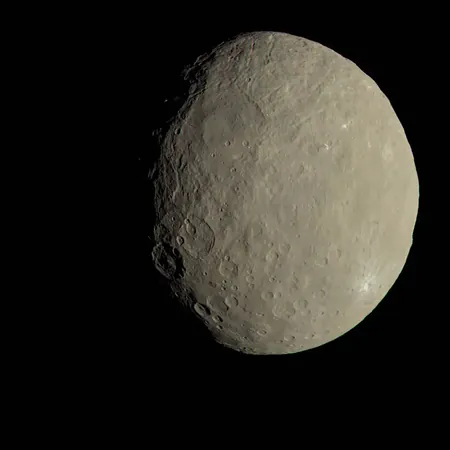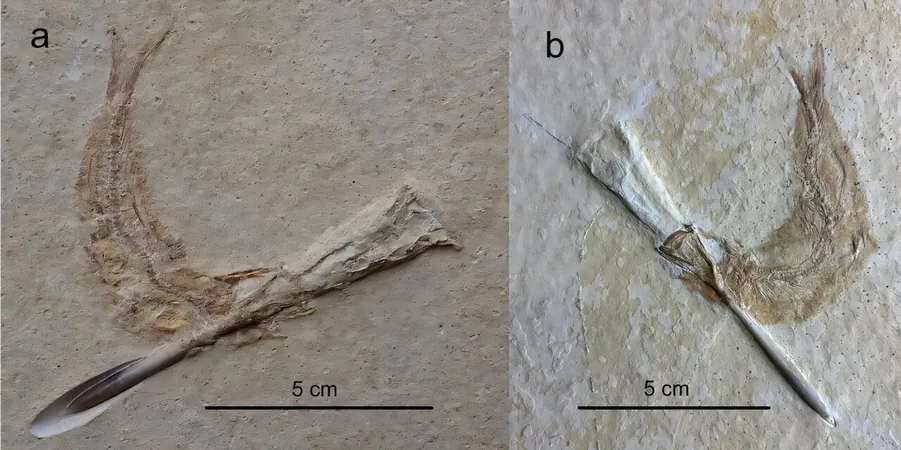
Unlocking the Secrets of Ceres: Could a Space Elevator Revolutionize Resource Extraction?
2025-06-18
Author: Siti
Explore Ceres: The Hidden Gem of the Asteroid Belt
Imagine tapping into the vast resources of Ceres, the largest object in the asteroid belt and a potential treasure trove for humanity's quest in space. Recent research from the University of Colorado, Colorado Springs, along with Industrial CNT, unveils a groundbreaking concept: a space elevator that could make water extraction from Ceres not just possible, but efficient!
Ceres: A Water Wonderland
Ceres, according to data from NASA's Dawn spacecraft, is composed of about 25% water. This isn’t just any water—it’s a critical resource for future space explorers, vital for supporting life and potentially used as rocket fuel. With advanced propulsion technologies utilizing water, the ability to harness this resource could change the game.
How a Space Elevator Could Transform Resource Extraction
But how do we get this water off Ceres, which has its own gravitational pull? Enter the concept of the space elevator. This innovative structure would not only facilitate easy transport of materials from the surface but also accelerate them into space at high speeds, drastically reducing the energy needed for launches.
Building Dreams: The Space Elevator Design
The proposed space elevator would stretch a staggering 30,000 kilometers, reaching far beyond Ceres's diameter. Made from carbon nanotubes, it could carry payloads weighing over 6,500 kilograms up to a high station, which would then allow for efficient launches depending on Ceres's rotation speed. This method could save around 60% of the energy needed to return a payload to Earth—what a game-changer!
Choosing the Right Propulsion System
In examining propulsion possibilities, Microwave Electrothermal Thrusters (METs) stood out, boasting a specific impulse of nearly 800 seconds. Another interesting option involves using water electrolysis for propulsion—splitting water into hydrogen and oxygen for combustion. However, this would require significant power, presenting a major engineering hurdle.
The Sun: A Bright Challenge in the Asteroid Belt
Power generation poses a daunting challenge in Ceres's dim sunlight. Technologies like Stirling engines or radioisotope thermal generators may be necessary, but scaling these solutions for a project of this magnitude remains a concern.
Communication Hurdles: The Delay Dilemma
Moreover, with a 25-minute communication delay due to Ceres's distance—beyond Mars—manual control from Earth is nearly impossible. This emphasizes the need for enhanced automation in any large-scale construction projects, such as the proposed space elevator.
The Future of Space Colonization Awaits
Space experts are excited about the potential of Ceres and believe it will eventually be mined for its resources. As technology advances, mission planners are sure to explore these innovative concepts, keen on tackling one of humanity's most ambitious engineering challenges. Could the space elevator be the future of resource extraction? Only time will tell!

 Brasil (PT)
Brasil (PT)
 Canada (EN)
Canada (EN)
 Chile (ES)
Chile (ES)
 Česko (CS)
Česko (CS)
 대한민국 (KO)
대한민국 (KO)
 España (ES)
España (ES)
 France (FR)
France (FR)
 Hong Kong (EN)
Hong Kong (EN)
 Italia (IT)
Italia (IT)
 日本 (JA)
日本 (JA)
 Magyarország (HU)
Magyarország (HU)
 Norge (NO)
Norge (NO)
 Polska (PL)
Polska (PL)
 Schweiz (DE)
Schweiz (DE)
 Singapore (EN)
Singapore (EN)
 Sverige (SV)
Sverige (SV)
 Suomi (FI)
Suomi (FI)
 Türkiye (TR)
Türkiye (TR)
 الإمارات العربية المتحدة (AR)
الإمارات العربية المتحدة (AR)